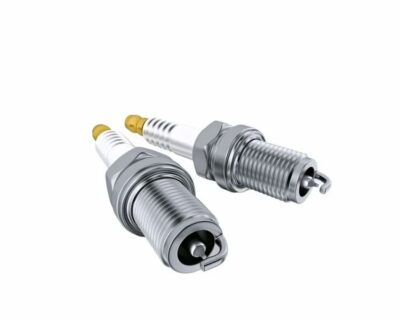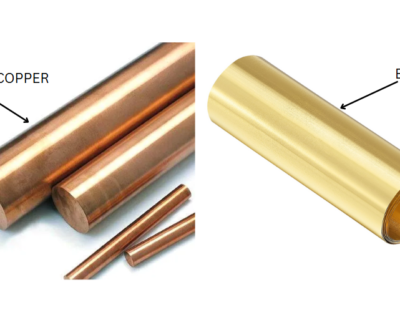Blogs

How to Choose and Use Non-Sparking Beryllium Copper Wrenches Safely
Overview
To choose and use non-sparking beryllium copper wrenches safely, one must understand their unique properties, adhere to safety protocols, and maintain them properly to ensure effectiveness in hazardous environments. The article emphasizes the importance of regular inspections, appropriate tool selection, and compliance with established safety standards, all of which are crucial for preventing accidents and ensuring the longevity of these specialized tools in industries like oil and gas.
Introduction
In industries where safety is non-negotiable, the choice of tools can mean the difference between a secure work environment and a catastrophic incident. Beryllium copper wrenches stand out as a critical solution in this regard, specifically designed to operate without the risk of sparking in environments filled with flammable gases or dust.
As organizations strive to comply with stringent safety regulations while enhancing operational efficiency, understanding the unique properties and applications of these non-sparking tools becomes essential. From their impressive strength and corrosion resistance to their lightweight design, Beryllium copper wrenches not only fulfill safety requirements but also deliver superior performance in demanding applications.
This article delves into the advantages, maintenance practices, and compliance standards associated with Beryllium copper tools, offering procurement managers the insights needed to make informed decisions that prioritize safety and efficiency in hazardous environments.
Understanding Non-Sparking Tools: The Role of Beryllium Copper Wrenches
Non-sparking beryllium copper wrenches are an essential class of implements, specifically designed to reduce the risk of ignition in areas filled with flammable gases or dust. Domadia, a prominent provider of high-performance Beryllium Copper Plates, guarantees that these products are made from an alloy recognized for its exceptional strength, remarkable electrical conductivity, corrosion resistance, and unique non-sparking properties. Industries like oil and gas, mining, and chemical processing, where protection is crucial, heavily depend on these innovative solutions.
The demand for non-sparking measuring tools increased by 8% in 2023, reflecting the industry’s steadfast emphasis on security and precision, alongside the stringent regulations governing these sectors. Furthermore, with a total of 2524 technical papers scanned and organized to enhance knowledge on process safety topics, ongoing research and development in this critical field is evident. By using non-sparking beryllium copper wrenches, professionals can confidently carry out tasks without the fear of spark generation, which could result in disastrous outcomes.
As mentioned by a representative from Bombay Tools, ‘This absorption of energy by the metal ensures that sparks do not possess high energy and lead to what is termed cold sparks, making the alloy non-sparking.’ Comprehending the characteristics and uses of non-sparking beryllium copper wrenches, including their application in connectors, electrical elements, and other precision uses, is crucial for upholding security and compliance in hazardous work settings. Companies such as Teng Tools lead this market, consistently improving their product range, while Domadia’s dedication to innovative manufacturing and strict quality control plays a major role in the overall expansion of the non-sparking tools market, ensuring that security remains a priority across various applications.
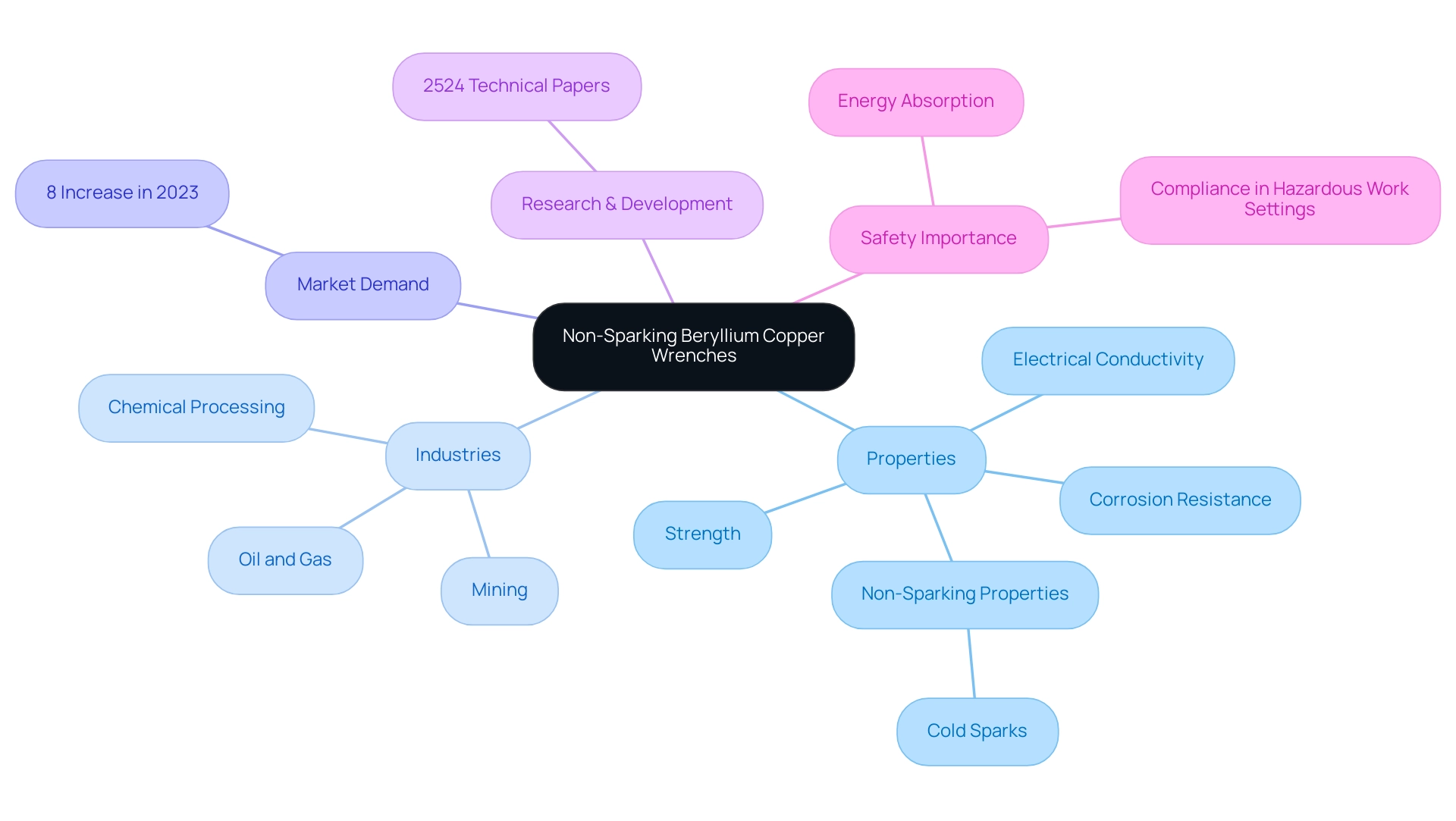
Safety Protocols for Using Beryllium Copper Wrenches
When utilizing Beryllium Copper wrenches in hazardous environments such as petrochemical plants and oil refineries, it is crucial to implement the following safety protocols:
- Regular Tool Inspections: Prior to each use, conduct thorough checks for any signs of wear, damage, or corrosion. Ensuring that the tool is in optimal condition is essential to prevent accidents and maintain safety standards, especially given its non-sparking and corrosion-resistant properties that are vital in explosive environments.
- Select the Correct Size: Always choose the appropriate tool size for the specific task. This precaution reduces the risk of slippage, a frequent cause of injuries related to hand instruments, and ensures effective use of its excellent thermal and electrical conductivity.
- Control Force Application: Utilize only the necessary force when operating the wrench. Excessive force can lead to equipment failure, which may result in serious incidents, particularly in environments where flammable substances are present.
- Wear Essential Personal Protective Equipment (PPE): In hazardous settings, it is imperative to wear safety glasses and gloves. This protective equipment significantly reduces the risk of injuries during equipment operation.
- Proper Storage: Following use, store tools in a dry environment to prevent corrosion and sustain their functional integrity.
By diligently adhering to these protocols, users can significantly enhance protection when using non-sparking beryllium copper wrenches. The emphasis on regular inspection and maintenance is particularly relevant, given alarming statistics such as the approximately 450,050 cases of days away from work (DAFW) reported in 2021-2022. This highlights the critical need for strict adherence to guidelines for protection.
Moreover, a case study on the prevalence of power equipment injuries shows that insufficient protective measures result in approximately 400,000 emergency room visits annually, emphasizing the pressing requirement for efficient protective protocols when utilizing devices in industrial environments. As Jose Rivera, Managing Editor, notes, “Implementing comprehensive precautionary measures is essential to protect workers and reduce injury rates in hazardous environments.
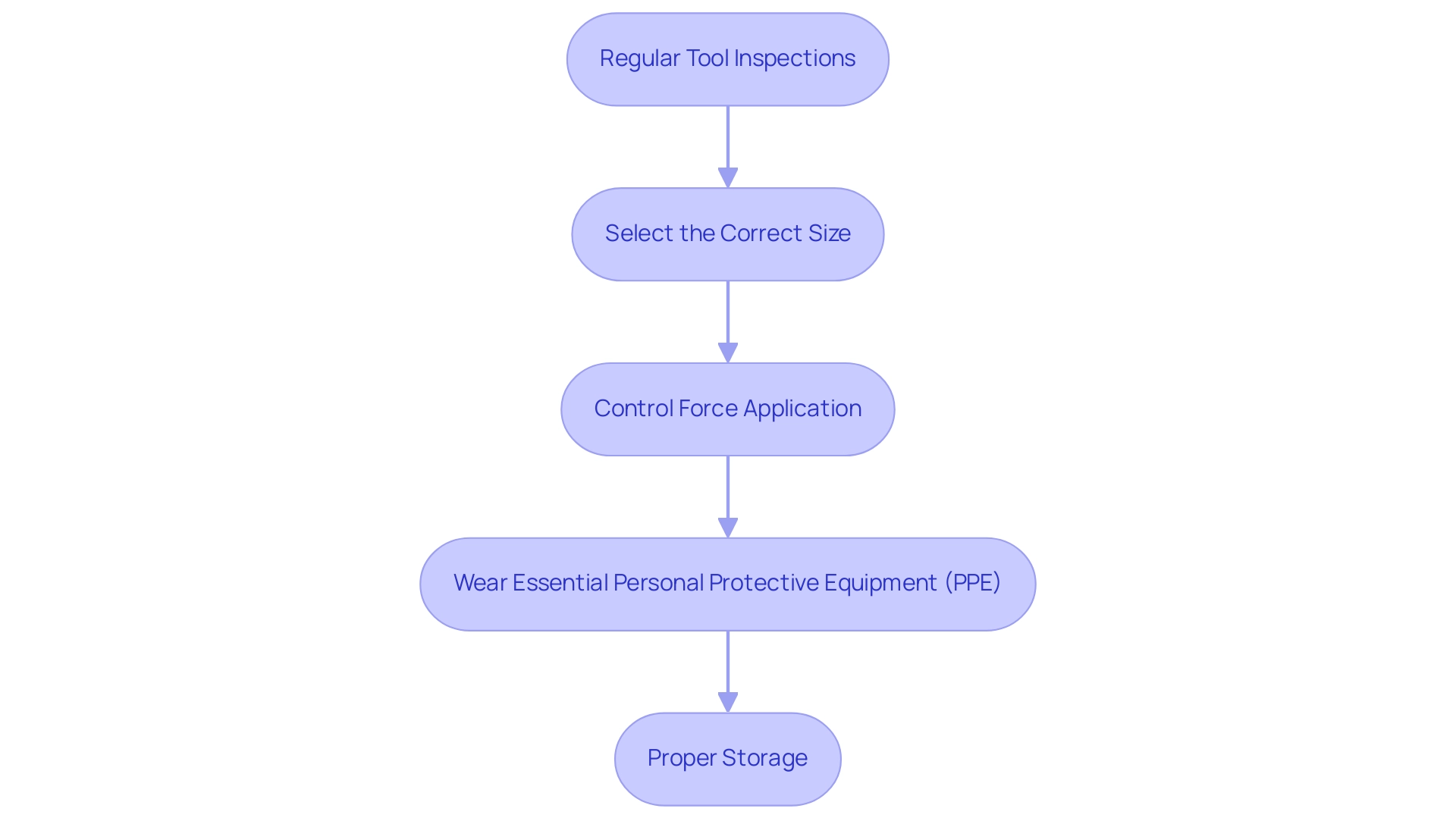
Advantages of Beryllium Copper Wrenches in Hazardous Work Environments
Beryllium alloy wrenches offer a variety of important benefits in dangerous work settings:
- Non-Sparking Properties: Unlike conventional steel implements, Beryllium alloy wrenches do not generate sparks upon impact, rendering them especially appropriate for application in flammable and explosive environments. The non-sparking beryllium copper wrenches are crucial for ensuring safety in industries such as oil and gas, where even a small spark can lead to catastrophic incidents. As a leading provider of non-sparking equipment, Domadia guarantees that their non-sparking beryllium copper wrenches are the optimal substitute for explosive potential environments.
- High Strength and Durability: Renowned for their exceptional strength, Beryllium alloy implements can endure heavy usage without succumbing to deformation. This resilience is essential for maintaining equipment integrity in demanding applications, thereby reducing replacement costs and enhancing operational efficiency. As observed by Huei-Sen Wang, the thermal conductivity and tensile strength of Beryllium alloys enhance their efficiency in industrial applications.
- Corrosion Resistance: Beryllium exhibits excellent resistance to corrosion in comparison to traditional steel implements, which is crucial for instruments exposed to severe environments. This property guarantees that these implements stay dependable over time, aiding in their durability and performance reliability.
- Lightweight Design: Weighing less than many other metals, Beryllium alloy devices help to reduce user fatigue during prolonged use. A lighter implement leads to greater ease of handling and reduced strain on the user, promoting safer working environments. Furthermore, Domadia’s innovative manufacturing methods and strict quality control practices not only guarantee that these devices meet the highest industry standards but also improve their protective features. A case study titled ‘Formability of Beryllium Alloy vs. Steel’ highlights that Beryllium material offers excellent formability, allowing it to be shaped into complex geometries with ease, while steel requires more force and energy to achieve similar shapes.
These benefits together establish non-sparking beryllium copper wrenches as an outstanding option for improving protection and efficiency in dangerous work environments, making them an essential resource for procurement managers seeking to enhance equipment performance in vital settings.
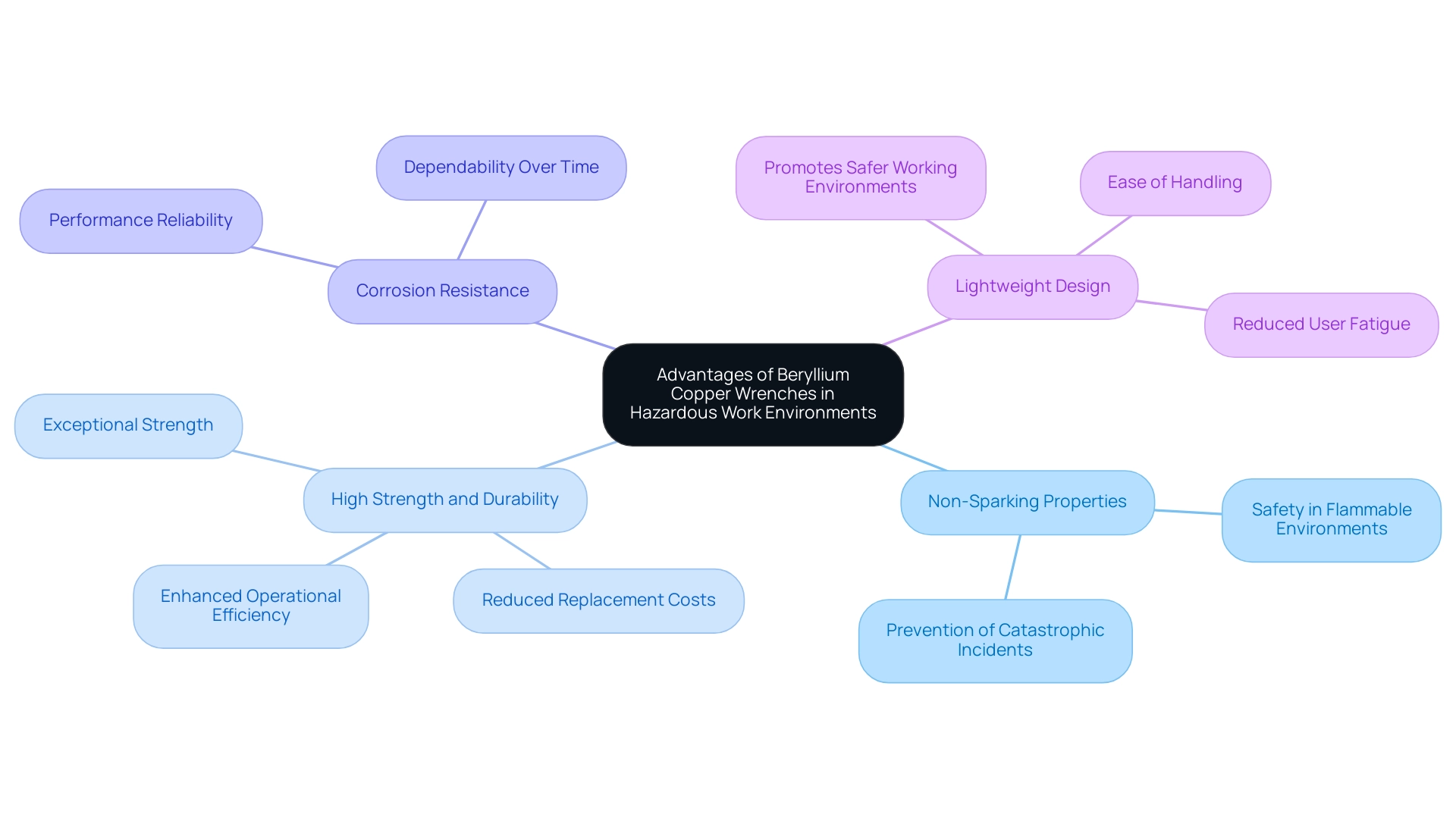
Compliance and Standards for Non-Sparking Tools
Choosing non-sparking beryllium copper wrenches is crucial for guaranteeing protection in explosive settings. Non-sparking beryllium copper wrenches are not only strong and durable but also ideal for use in demanding applications. Following established compliance and security standards is paramount.
The ASTM B194 standard outlines the composition and properties of beryllium copper alloys, ensuring that non-sparking beryllium copper wrenches possess the characteristics necessary for safe operation in hazardous settings. Furthermore, the Occupational Safety and Health Administration (OSHA) enforces strict regulations that outline protective measures for equipment utilized in potentially explosive areas. Compliance with these regulations not only represents best practice but is often a legal necessity aimed at mitigating workplace accidents.
A significant case study titled ‘Compliance with OSHA Safety Standards’ emphasizes how the use of non-sparking beryllium copper wrenches improves protective measures when working near flammable substances, thereby contributing to overall workplace security. Furthermore, adherence to the ISO 9001 standard is critical, as it ensures that suppliers maintain high-quality production processes, guaranteeing the reliability and effectiveness of the products provided to the market. It’s noteworthy that:
- 67% of global executives find ESG regulation overly complex
- 70% seek more guidance from regulators
This reflects the compliance challenges that procurement managers face.
By thoroughly grasping and following these standards, procurement managers can confidently choose non-sparking beryllium copper wrenches that meet rigorous quality criteria, significantly lowering the risks linked with equipment usage in hazardous environments. Furthermore, key areas fueling the demand for non-sparking hand implements include:
- The Middle East
- North America
- Asia Pacific
This emphasizes their importance across various industries. Non-sparking beryllium copper wrenches are the best tools for non-sparking application purposes in explosive potential environments, ensuring maximum security and performance.
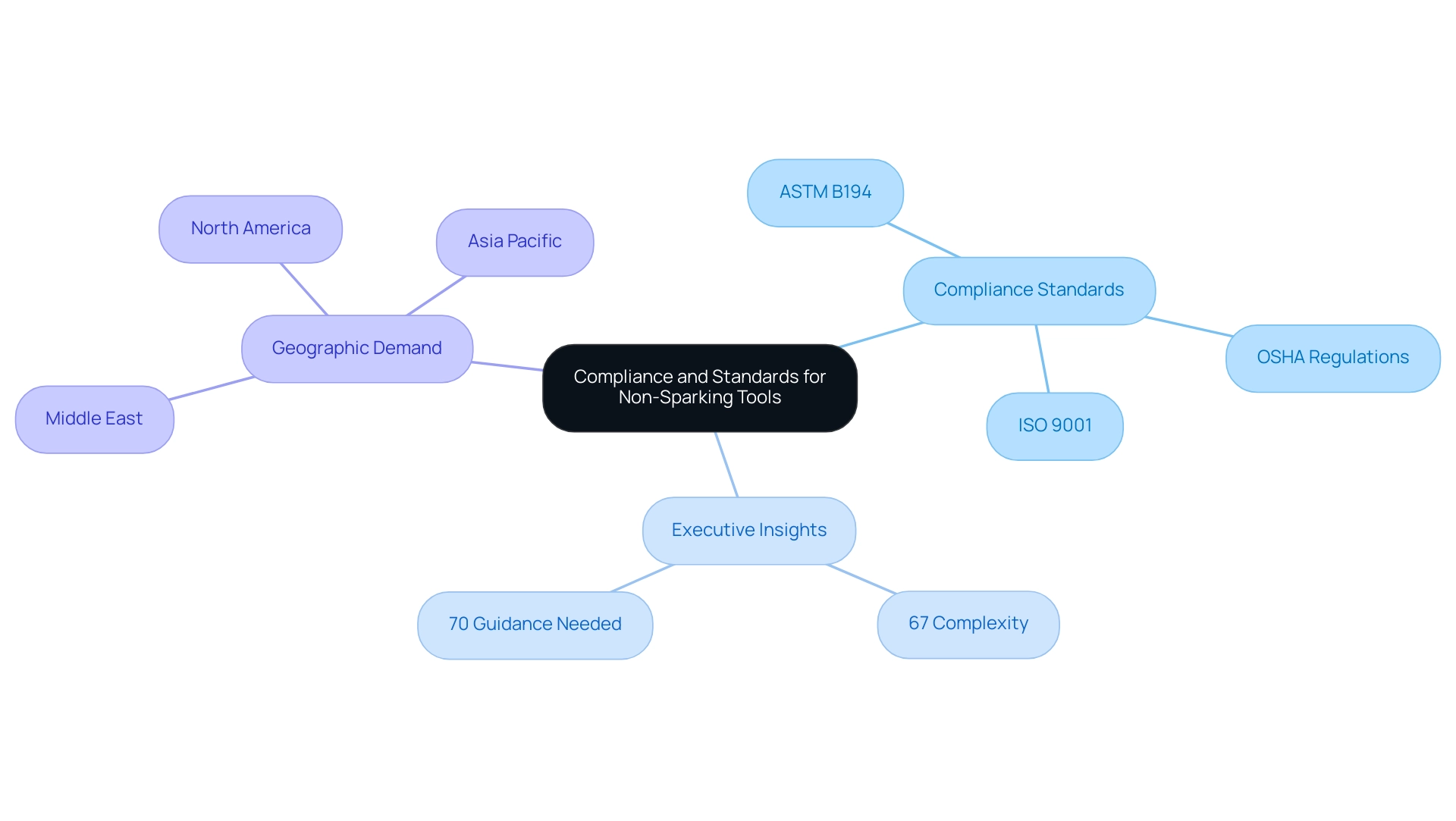
Maintaining Your Beryllium Copper Wrenches for Optimal Safety
Properly caring for your non-sparking beryllium copper wrenches is crucial to guarantee their durability and peak functionality in dangerous settings where security is vital. Here are key practices to follow:
- Clean After Each Use: It is crucial to wipe down the tools with a soft cloth after each use to eliminate dirt and grease.
Avoid harsh chemicals, as these can compromise the integrity of the alloy and diminish its non-sparking and corrosion-resistant properties. - Inspect Regularly: Implementing a routine for periodic inspections is vital to identify any signs of wear or damage.
Tools exhibiting significant deterioration should be replaced promptly to avoid safety hazards during use, especially in environments with explosive potential. - Store Properly: Store your wrenches in a dry, cool environment, ideally within a protective case.
This practice helps prevent scratches and corrosion, which can adversely affect functionality over time and ensure that their excellent thermal and electrical conductivity remains intact.Avoid Mixing with Steel Instruments: To preserve the non-sparking characteristics of non-sparking beryllium copper wrenches, it is essential to keep them apart from steel instruments.
This separation prevents contamination and ensures that the instruments maintain their intended protective attributes, vital for industrial applications in explosive environments.Follow Protection Protocols: Always comply with appropriate protection guidelines and handling procedures when using beryllium implements.
This includes wearing appropriate personal protective equipment (PPE) and ensuring that the work area is free from potential hazards.
By adhering to these maintenance practices, users can significantly enhance the lifespan and safety of their non-sparking beryllium copper wrenches.
The effectiveness of these strategies is underscored by industry insights that emphasize regular maintenance as a critical factor in reducing operational downtime and improving overall tool performance.
In fact, 41% of companies view lack of resources or staff as the biggest challenge to improving maintenance, highlighting the importance of having proper practices in place.
Additionally, the Fix Implementation Guide states that 60 – 80% of CMMS implementations fail due to poor user engagement and training, which further stresses the need for effective training in maintenance practices.
Moreover, neglecting maintenance can have severe financial implications, as evidenced by a case study showing that unplanned downtime in the automotive industry can cost an average of $22,000 per minute, prompting 53% of manufacturers to prioritize outsourcing maintenance teams for preventive measures.
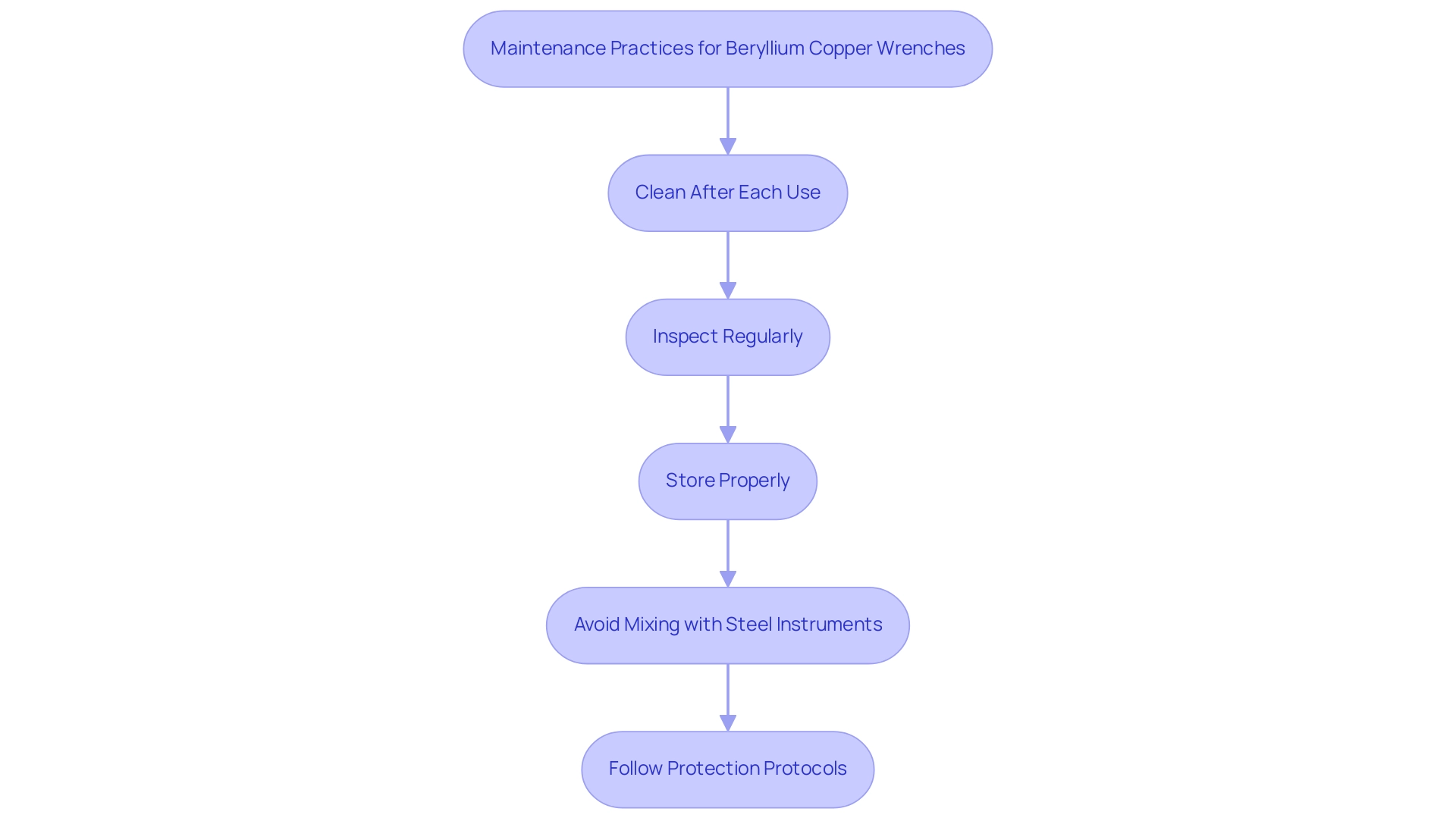
Conclusion
Beryllium copper wrenches are not just tools; they are critical assets in maintaining safety and efficiency in hazardous work environments. Their non-sparking properties make them indispensable in industries where flammable gases and dust pose significant risks. Coupled with high strength, excellent corrosion resistance, and a lightweight design, these wrenches not only meet stringent safety standards but also enhance operational performance.
To maximize the benefits of Beryllium copper wrenches, adherence to rigorous maintenance practices is essential. Regular inspections, proper storage, and diligent cleaning after each use ensure these tools remain reliable and effective. Furthermore, compliance with safety regulations such as ASTM B194 and OSHA standards reinforces the importance of using quality tools designed for high-stakes environments.
Ultimately, the strategic selection and maintenance of Beryllium copper wrenches empower procurement managers to enhance workplace safety while ensuring compliance with industry standards. By prioritizing these tools, organizations can significantly mitigate the risks associated with tool usage, fostering a safer and more productive working environment. Investing in Beryllium copper tools is not merely a choice; it is a commitment to safety and excellence in every operation.

